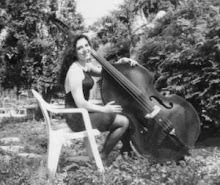Way worse than mice
My handyman was going to see if the woodpecker hole in the siding of my house was where mice were gaining entry. It was FAR worse than we had imagined. A flying squirrel ran out and perched on my roof to see what was happening to his home.
Ah yes, when the handyman banged on the side of my house, a total of EIGHT flying squirrels ran out of that hole. It is now patched up.
Here's my research for the day:
http://en.wikipedia.org/wiki/Northern_flying_squirrel The Northern flying squirrel nests in holes in trees, preferring large-diameter trunks and dead trees, and will also build outside leaf nests called dreys. They sometimes use cavities created by woodpeckers.
Flyers need only 1/2 inch to get into a building http://experts.about.com/q/Pest-Control-1500/flying-squirrel.htm
FLYING SQUIRRELS Traps for flying squirrels should be made of small mesh wire so they can not escape from the trap. Good baits include peanut butter, pecan meats and sunflower seeds. Before putting bait into the trap, put it near the trap in a saucer to let the animal become accustomed to the trap. After three days of feeding from the bait, place the saucer and food just inside the trap, without setting it. When the animals are used to eating from inside the trap, set it to catch the squirrel. If there are several flying squirrels in an attic, the process may take two or three weeks. http://www.cooperseeds.com/pages/traps/squirrels.html
http://www.wap.atfreeweb.com/flyingsquirrels/fdrpics/01.html pictures of a trap for flying squirrels
Management of Problem Flying Squirrels: Most complaints about flying squirrels are from homeowners with squirrels in their houses. Squirrels will readily take up residence in a building if access is available to a sheltered area. Flying squirrels enter homes through small holes around dormers, ridge vents, eaves, attic vents, and similar vulnerable areas. All such holes should be closed to prevent squirrels and other animals from gaining entrance. Be sure that no squirrels are trapped inside. Adults can cause severe damage by chewing to regain entrance to reach their young. If chewing persists, heavy, half-inch wire mesh can be temporarily placed over the problem area.
The trapping of squirrels can temporarily solve a persistent problem but will not help in the long run, since other squirrels will soon come into an area to replace the removed animals. http://dep.state.ct.us/burnatr/wildlife/problem/sqrlprob.htm
Nuisance Wildlife Control Operator http://dep.state.ct.us/burnatr/wildlife/problem/nwco.htm#NWCOINFO


5 Comments:
http://www.rockyandbullwinkle.com/
glad it got solved. thought it might be squirrels. Ironically, I lived in Ct when this happened to me. Hope you aren't in my old house!
Oh no... I don't live in CT, that was just a link I found in my googling for answers.
I'm just hoping that this WHOLE thing is over now, and that I can afford the $10,000-13,000 for new siding in the spring so this cycle (woodpeckers and squirrels) can END.
Oof...
"If there are several flying squirrels in an attic, the process may take two or three weeks."
How about 8?
"Be sure that no squirrels are trapped inside. Adults can cause severe damage by chewing to regain entrance to reach their young."
How, exactly, can you be sure that there are no babies in there?
I found another good link:
http://dnr.wi.gov/org/caer/ce/eek/critter/mammal/flysquirrel.htm
As for babies, I would guess that November isn't the time of year for them. In fact I read that it's too late for babies. Since there were 8 in there, it makes me believe those once WERE the babies.
I sure hope this is over....
Post a Comment
<< Home